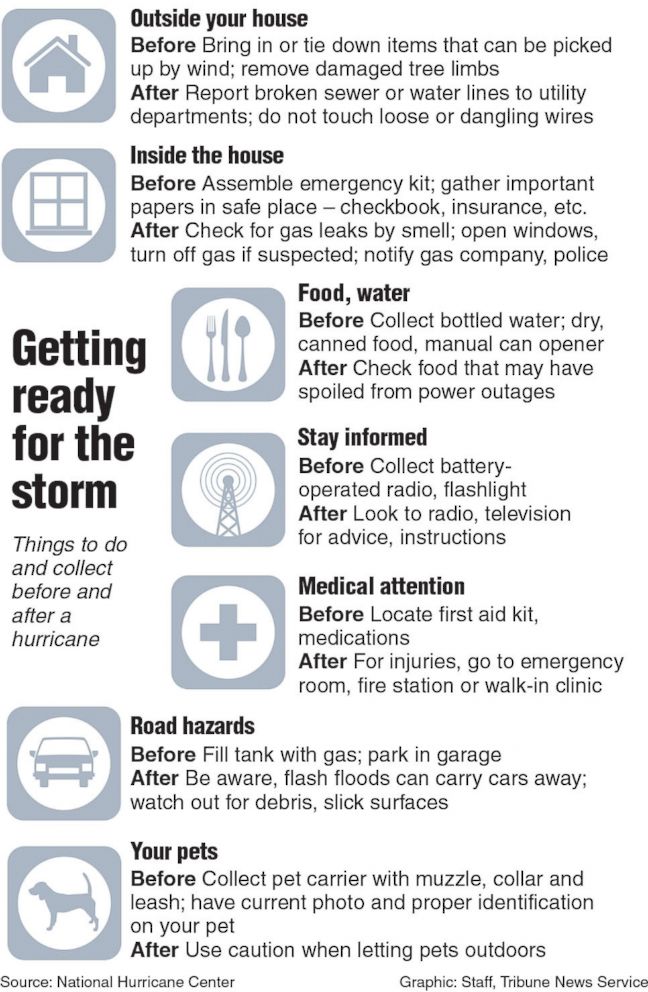Florida 'prepares for the worst and hopes for the best' before Hurricane Irma
— -- Residents and officials in Puerto Rico and Florida are preparing for Hurricane Irma as it strengthens over the Caribbean into a "potentially catastrophic" Category 5 storm, according to the National Hurricane Center (NHC).
The NHC said that "preparations should be rushed to completion" in hurricane warning areas, which include Puerto Rico and many other islands in the Caribbean.
The storm is expected to approach Florida Sunday morning with winds of 145 miles per hour. Florida Gov. Rick Scott declared a state of emergency on Monday for every county in the state to ensure that local governments have enough "time, resources and flexibility to get prepared for this dangerous storm," according to a statement from his office.
As part of the state of emergency, the National Guard has been activated and schools have been closed.
Monroe County, which includes the Florida Keys, has issued a mandatory evacuation order starting Wednesday morning, and schools are being closed until further notice, officials announced Tuesday.
Scott said in the statement that Irma is a "life-threatening" storm and Florida "must be prepared."
"In Florida, we always prepare for the worst and hope for the best," Scott said. "While the exact path of Irma is not absolutely known at this time, we cannot afford to not be prepared."
Residents are already stocking up on water, batteries, generators, plywood and other essentials as the storm nears the coastline. Scott urged residents to take the appropriate precautions.
Ahead, here are some of the safety tips officials recommend for residents in Irma's projected path.

How to prepare outside
According to Ready.gov, the disaster preparedness website run by the Department of Homeland Security, people can take several steps to help mitigate damage to the exterior of their homes.
- -Board up or tape shut windows and doors and lock any hurricane shutters.
- -Trim nearby trees and get rid of loose limbs that could be ripped off in hurricane-force winds. This is one step that can be taken months in advance.
- -Secure loose rain gutters and clean them out, preventing the buildup of debris that can lead to flooding.
- -Fill cars with gas and park vehicles in garages when possible.
How to prepare inside
For those staying in their homes, key steps can be taken ahead of time to ensure people have enough supplies to last through the storm.
- -Keep portable generators dry and outside of the main house, ideally in a shed or garage.
- -Stock up on bottled water and nonperishable in advance. Access to clean water may be limited for several days, and it may not be possible to leave and buy more supplies. Canned food is a good option, along with a manual (nonelectric) can opener.
- -Protect important documents and paper items from flooding by storing them in a dry, safe place, ideally either on an upper floor or in a higher location on a lower floor.
- -Prepare a first-aid kit, and make sure that any necessary medications are available in sufficient amounts to last multiple days.
During previous hurricanes, FEMA has recommended that homeowners unplug electronic equipment -— including computers, televisions and wireless routers -— and move them to a safe place. Even if households have surge protectors, lightning strikes could be hazardous.
Officials have also recommended rolling up area rugs and storing them on higher floors to reduce the chance of mold.
ABC News' Meghan Keneally contributed to this report.




